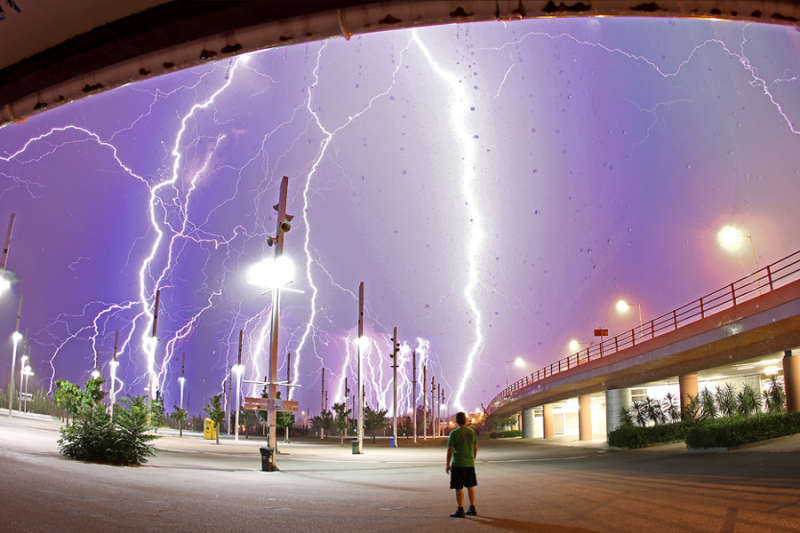Credit & Copyright: Chris Kotsiopoulos
Explanation:
Have you ever watched a lightning storm in awe?
Join the crowd.
Oddly, nobody knows exactly how
lightning is produced.
What is known is that charges slowly separate in some clouds causing rapid electrical
discharges
(lightning), but how electrical charges get separated
in clouds remains a topic of much research.
Lightning usually takes a jagged course,
rapidly heating a thin column
of air to about three times the surface temperature of the
Sun.
The resulting shock wave starts
supersonically and decays into the
loud sound known as
thunder.
Lightning bolts are common in clouds during rainstorms, and on average
6,000 lightning bolts occur between clouds and the Earth every minute.
Pictured above, an
active lightning storm was recorded over
Athens,
Greece earlier this month.
1999 2000 2001 2002 2003 2004 2005 2006 2007 2008 2009 2010 2011 2012 2013 2014 2015 2016 2017 2018 2019 2020 2021 2022 2023 2024 2025 |
Yanvar' Fevral' Mart Aprel' Mai Iyun' Iyul' Avgust Sentyabr' Oktyabr' Noyabr' Dekabr' |
NASA Web Site Statements, Warnings, and Disclaimers
NASA Official: Jay Norris. Specific rights apply.
A service of: LHEA at NASA / GSFC
& Michigan Tech. U.
|
Publikacii s klyuchevymi slovami:
lightning - molnii na Zemle
Publikacii so slovami: lightning - molnii na Zemle | |
Sm. takzhe:
Vse publikacii na tu zhe temu >> | |
